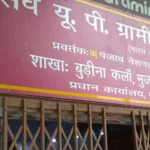Mumbai: A recent survey reveals that a significant number of Indian banking customers are still hesitant to purchase financial products online, despite a notable rise in digital platforms. The FIBAC 2025 Consumer Survey indicates that while 60% of respondents are willing to make online purchases, the user experience offered by banks is falling short. With private banks outpacing public sector competitors, findings indicate a pressing need for improved banking app functionality.
- The Rise of Digital Banking: A Mixed Bag of Confidence
- Private Banks vs. Public Sector Banks: A Clear Discrepancy
- Bridging the User Experience Gap
- The Trust Factor: Navigating Consumer Perceptions
- The Road Ahead: Enhancing Digital Journeys
- 💡 Bankerpedia’s Insight
- 🤔 What Does This Mean for Me?
- 📚 Research References
The Rise of Digital Banking: A Mixed Bag of Confidence
In today’s rapidly evolving financial landscape, the integration of technology into banking is becoming the norm. However, a report from the FIBAC 2025 Consumer Survey highlights that Indian banking customers are still cautious about purchasing products online. Even with the surge in the use of digital platforms, many customers are drawn to the traditional banking experience.
The survey involved over 5,000 participants and revealed that while a significant 60% of customers are willing to buy products online, they prioritize user experience and trust. This caution is particularly evident when it comes to core products such as loans, investment opportunities, and insurance. For instance, customers often prefer visiting a bank branch for substantial transactions rather than opting for digital alternatives, which they find cumbersome.
Private Banks vs. Public Sector Banks: A Clear Discrepancy
The FIBAC survey also differentiated performance between private and public sector banks. According to BCG’s Digital 360º benchmarking, private banks scored significantly higher than their public sector peers. Private banks achieved a score of 43 in product application and fulfillment processes, while their public sector counterparts lagged at just 20.
This significant gap illustrates the diverse experiences customers encounter between these banking sectors. Customers reported private banks offering better marketing engagement and support. They scored 41 and 25 respectively, compared to a dismal 16 and 21 for public banks. Despite the advantage, it’s clear that both sectors need to enhance their strategies to foster greater customer confidence and satisfaction.
Bridging the User Experience Gap
The survey pinpointed several critical areas of improvement for Indian banks, particularly in their mobile banking applications. Features such as straight-through processing, pre-filled forms, and personalized recommendations were starkly missing. Enhancing application processes and enabling remote fulfillment were deemed essential to drive more robust adoption of online banking.
Additionally, the need for a multi-channel support system was emphasized—integrating real-time assistance through various platforms could simplify the customer journey significantly. Imagine a scenario where a customer can receive instant responses to inquiries via chat, receive personalized recommendations for loans based on their profile, and effortlessly complete transactions without visiting a branch.
Furthermore, advanced data analytics and targeted marketing were called out as key strategies to create personalized experiences. Banks need to pivot from a one-size-fits-all approach to a “Next Best Action” framework, which anticipates customer needs and suggests relevant products, thereby increasing engagement.
The Trust Factor: Navigating Consumer Perceptions
Interestingly, the survey found that consumers tend to feel more comfortable with non-bank applications—such as payment and social media platforms—when it comes to ease of use. Apps like PhonePe, Google Pay, and WhatsApp are seen as more user-friendly options. This raises an important question: why are consumers so hesitant to embrace banking apps for core financial products?
One major factor is trust. Many customers remain skeptical about the security of online banking. In contrast to the established presence of traditional banks, newer payment apps have built their credibility based on quick, simple transactions. Current trends show that consumers are more likely to open basic savings accounts via these apps rather than risk larger investments or loans.
For example, consider Riya, a 28-year-old professional from Mumbai. While she’s quick to use Google Pay for daily expenses, she opts for her local bank branch when applying for a home loan. The trust and personal attention she feels at the bank outweigh the convenience factor provided by fintech solutions in her eyes.
The Road Ahead: Enhancing Digital Journeys
The findings of the FIBAC 2025 Consumer Survey underline a crucial challenge facing the Indian banking sector: the need to continuously enhance digital journeys within their own applications while also competing with technology-driven platforms that have set higher user experience benchmarks.
Banks must innovate, revamp their digital interfaces, and adopt a customer-first approach. Streamlining services and simplifying the customer experience will play a vital role in rebuilding trust and increasing user engagement.
As the Indian economy continues to grow and adapt to digital transformations, the banking sector must not fall behind. Improved user experience, better security measures, and a strong emphasis on customer support will go a long way in ensuring that customers choose to embrace online banking fully. The future might just be digital, but ensuring that it’s trusted and user-friendly remains the primary objective for all players in the industry.
💡 Bankerpedia’s Insight
The recent regulatory reforms in India’s banking sector signal a significant shift towards enhanced transparency and risk management. These changes aim to bolster public trust and stabilize the financial ecosystem, which is crucial for economic growth. Investors and consumers should remain aware of how these reforms may affect lending practices and interest rates. It’s essential to stay informed about your financial options and consider diversifying investments to mitigate risks. Ultimately, these developments promise a safer banking environment while fostering sustainable growth.
🤔 What Does This Mean for Me?
- Salaried Person → Increased financial stability and potential economic changes.
- Business Owner → Potential cost increases and supply chain disruptions expected.
- Student → Increased motivation and awareness of global issues.
- Self-employed → Potential income fluctuations and increased financial uncertainty.
- Homemaker → Increased grocery costs affect budgeting and meal planning.
- Retiree / Senior Citizen → Potential income changes, healthcare costs, retirement plans affected.
- Job Seeker → Job market shifts may affect hiring opportunities.
- Farmer / Rural Citizen → Increased costs, limited access to resources, economic strain.
📚 Research References
- bfsi.economictimes.indiatimes.com
- RBI
- SEBI
- Ministry of Finance
- NABARD
- Department of Financial Services (DFS)
📲 Stay ahead in banking & finance!
Join the Bankerpedia WhatsApp Channel for instant updates, and
subscribe to our YouTube Channel for in-depth analysis and expert explainers.










